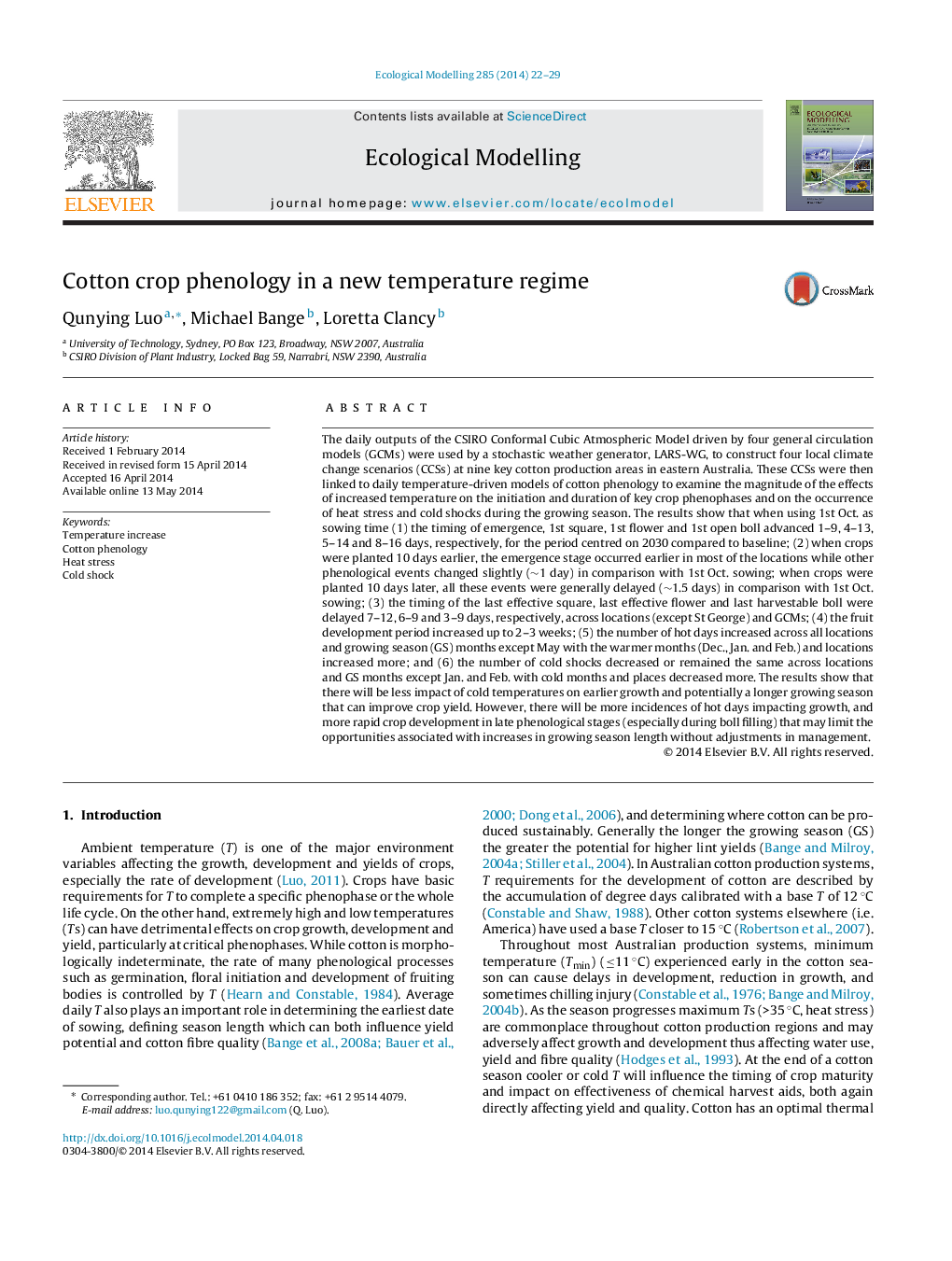| Article ID | Journal | Published Year | Pages | File Type |
|---|---|---|---|---|
| 4375956 | Ecological Modelling | 2014 | 8 Pages |
•Warmer climate advanced emergence, 1st square, 1st flower and 1st open boll.•Later sowing (10 d) delayed all these events compared with 1st Oct. sowing.•Earlier sowing (10 d) advanced emergence more compared with 1st Oct. sowing.•The last effective square and flower and the last harvestable boll were delayed.•The no. of hot days increased and the no. of cold shocks decreased or unchanged.
The daily outputs of the CSIRO Conformal Cubic Atmospheric Model driven by four general circulation models (GCMs) were used by a stochastic weather generator, LARS-WG, to construct four local climate change scenarios (CCSs) at nine key cotton production areas in eastern Australia. These CCSs were then linked to daily temperature-driven models of cotton phenology to examine the magnitude of the effects of increased temperature on the initiation and duration of key crop phenophases and on the occurrence of heat stress and cold shocks during the growing season. The results show that when using 1st Oct. as sowing time (1) the timing of emergence, 1st square, 1st flower and 1st open boll advanced 1–9, 4–13, 5–14 and 8–16 days, respectively, for the period centred on 2030 compared to baseline; (2) when crops were planted 10 days earlier, the emergence stage occurred earlier in most of the locations while other phenological events changed slightly (∼1 day) in comparison with 1st Oct. sowing; when crops were planted 10 days later, all these events were generally delayed (∼1.5 days) in comparison with 1st Oct. sowing; (3) the timing of the last effective square, last effective flower and last harvestable boll were delayed 7–12, 6–9 and 3–9 days, respectively, across locations (except St George) and GCMs; (4) the fruit development period increased up to 2–3 weeks; (5) the number of hot days increased across all locations and growing season (GS) months except May with the warmer months (Dec., Jan. and Feb.) and locations increased more; and (6) the number of cold shocks decreased or remained the same across locations and GS months except Jan. and Feb. with cold months and places decreased more. The results show that there will be less impact of cold temperatures on earlier growth and potentially a longer growing season that can improve crop yield. However, there will be more incidences of hot days impacting growth, and more rapid crop development in late phenological stages (especially during boll filling) that may limit the opportunities associated with increases in growing season length without adjustments in management.
